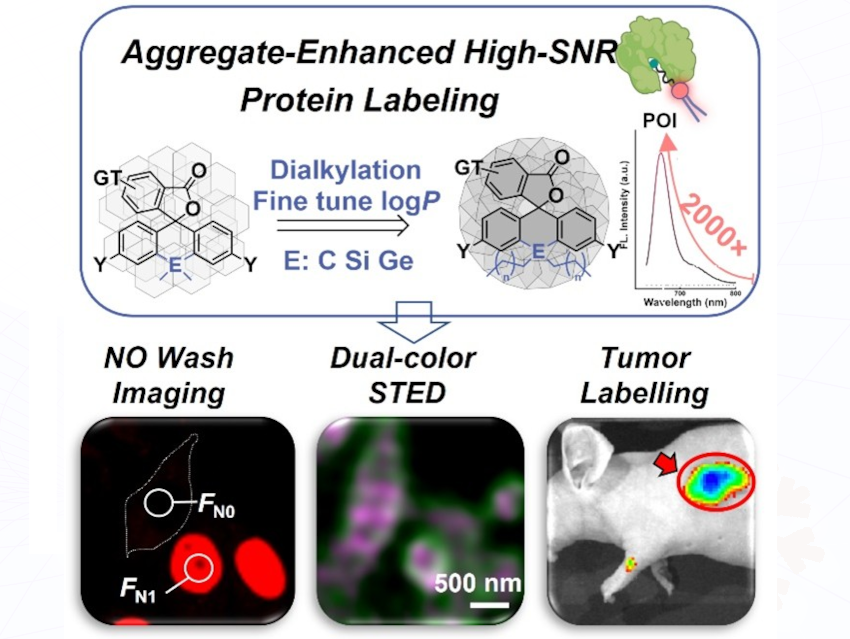The aggregation of organic molecules in aqueous solutions is ubiquitous, yet its underlying mechanisms remain insufficiently understood. Advancing our comprehension of the formation of nano-aggregates and unlocking their potential applications presents significant scientific challenges. Fluorescence bioimaging is one of the most established platforms for visualizing the dynamics of molecular activities with high-throughput information. The quality of imaging data is directly determined by the signal-to-noise ratio (SNR); thus, improving SNR is essential in bioimaging.
Xiaoyan Cui, East China Normal University, China, and colleagues have quantificationally evaluated the aggregation of molecules and proposed a general strategy for fine-tuning the fluorogenicity of Group 14 (C, Si, Ge) rhodamines. By dialkylation at the bridging atoms, researchers successfully enhanced the brightness and SNR (over 2000) of rhodamines through the tuned equilibrium of nano-aggregation. In the developed probes, their background fluorescence is efficiently suppressed without significantly reducing the signal fluorescence and recognition kinetics, leading to enhanced fluorogenicity, particularly in protein-labeling applications. As a result, the designed probes enabled multicolor no-wash STED imaging of different organelles with robust resolution. With the revolutionary tools, the over-expression of αvβ3 was sensitively tracked by RGDyK-based SiR fluorogenic probe in living animals.
This work demonstrates that precise tuning and understanding of molecular structures can drive innovation in fields such as fluorescence bioimaging within complex biological systems.
- A General Strategy to Fine-Tune Group 14 Rhodamines for Ultrahigh Signal-to-Noise Ratio Labeling In Vivo by Nano-Aggregation,
Ning Wang, Ting Wang, Mengting Fan, Chen Li, Yue Tian, Xiaoyan Cui,
Aggregate 2025.
https://doi.org/10.1002/agt2.70077


